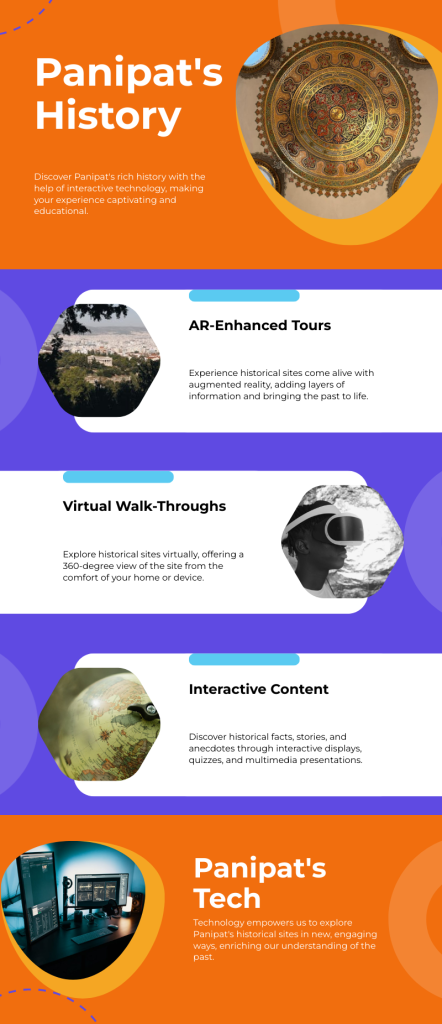Panipat, a city steeped in history, has witnessed some of the most significant events in Indian history. From the legendary battles to architectural marvels, the city’s historical sites attract history enthusiasts, travelers, and researchers. But in today’s fast-paced world, technology is offering new ways to experience and explore these timeless landmarks. Let’s delve into how digital tools are revolutionizing our understanding and interaction with Panipat’s historical treasures.

The Role of Technology in Preserving History
1. Virtual Reality (VR) Tours
Imagine walking through the battlegrounds of the First Battle of Panipat or exploring the intricacies of Kabuli Bagh Mosque without leaving your home. Virtual Reality (VR) technology has made this possible. Organizations and local businesses are now creating immersive VR experiences that allow users to explore these sites in vivid detail, bringing history to life in an unprecedented way.
2. Augmented Reality (AR) Guides
Augmented Reality (AR) applications enhance on-site visits by overlaying historical information and visuals on your smartphone or tablet screen. For instance, as you stand at the Hemu’s Samadhi Sthal, an AR app can show how the site looked centuries ago, providing a deeper connection to its historical significance.
3. Digital Archives and Resources
Digital tools have enabled the creation of extensive archives, including 3D models, high-resolution photographs, and detailed historical records. These resources are invaluable for researchers and students delving into Panipat’s rich history. Accessible through websites and mobile apps, they ensure that the past is preserved for future generations.
Highlighting Panipat’s Key Historical Sites
1. Kabuli Bagh Mosque
Built by Babur to commemorate his victory in the First Battle of Panipat, this mosque is an architectural gem. Digital restoration projects and 3D walkthroughs allow visitors to appreciate its intricate designs and historical importance.
2. The Panipat Museum
The museum is a treasure trove of artifacts from Panipat’s three legendary battles. Interactive exhibits powered by AI and touchscreens make learning engaging for visitors of all ages.
3. Hemu’s Samadhi Sthal
This memorial honors Hemu, the valiant warrior who fought in the Second Battle of Panipat. Drone photography and virtual storytelling tools have transformed the way we view and understand this significant site.
How You Can Explore Panipat Digitally
1. Leverage Mobile Apps
Several mobile applications offer guided tours, historical insights, and interactive features for Panipat’s historical sites. Apps like Google Arts & Culture even feature 3D models and high-quality images of key landmarks.
2. Participate in Online Forums
Join communities and forums dedicated to exploring and discussing Panipat’s history. Platforms like Reddit and Quora often host lively discussions, while social media groups share rare photos and stories.
3. Contribute to Digital Preservation
Share your own photographs, videos, and experiences from Panipat’s historical sites on platforms like Instagram or dedicated history blogs. Your contributions can help enhance digital archives and inspire others to explore the city.

Conclusion
Panipat’s historical sites are not just remnants of the past; they are vibrant stories waiting to be told. With the power of digital tools, these stories are now more accessible and engaging than ever before. Whether you are a history buff, a student, or a curious traveler, embracing these digital innovations will enrich your connection to Panipat’s glorious past.
Ready to delve into the digital world of history? Consult Solutions Bajaj for innovative IT and AI solutions to bring historical preservation and education to the next level. Contact us today to explore tailored digital transformation services.


Leave a Reply